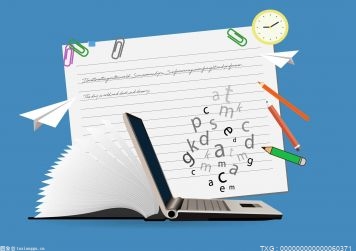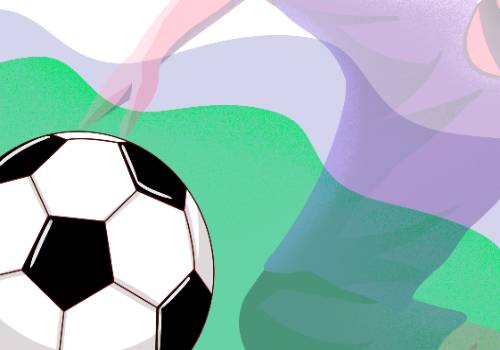【珍贵影像史料】百余年前的芭蕾风貌:视频相关信息|环球速看
此文为视频 BV13L411U7Vj 中各个分P的各自简介等信息合集
P1【An Early Ballerina Demonstrates the Qualities of the Danish Bournonville Style】
I’ve long seen this footage, and you may well have too, but I haven’t seen film so clear a copy before. In this case, I thought an upload was in order.
 (资料图)
(资料图)
The ballerina so well demonstrates the qualities of the Danish Bournonville style – clean precise movements, lightness, quickness, rapid batteries and so on. I’ll leave identification of the dancer and the ballet for ‘Comments’ - just to be save from the copyright police! Enjoy!
评论
Massialot 4年前
The dancer is Valborg Borchsenius, who is in several other films of that series, including Napoli. The one that I crave to see, if you can find, it is the Springdans and Hornpipe from Bournonville's Livjaegerne paa Amager with Borchsenius with, I believe Hans Beck and Ellen Price. I saw it 20 years ago at the Lincoln Ctr Library...
---------------------------------
P2【Carlotta Zambelli (1875-1968) - A Forgotten Ballerina of Some Note】
Carlotta Zambelli (1875-1968) is one of those dancers who has passed across my consciousness a number of times without making a strong impression.
In fact my most distinct recollection of her was in a photograph in a ballet book used to demonstrate the depths to which ballet had sunk in the late C19 and before the advent of Serge de Diaghilev and the Ballets Russes. It was an image of Zambelli and Antonine Meunier titillatingly 'en travesti' in 'Les Deux Pigeons' in 1886.
However, there might have been more to this ballerina than what appears to be music hall turns.
An Italian, she studied as a pupil of Adelaide Viganò and Cesare Coppini at the La Scala Ballet School from 1884, and then at the Paris Opera Ballet School with Rosita Mauri.
She debuted at the Paris Opera in 1894 and was made étoile in 1898.
In 1896, she caused a sensation when she executed fifteen fouettés in a divertissement from the opera 'La Favorita'.
The gold standard of 32 fouettes of course had been set in 1893 by Pierina Legnani at the premiere of 'Cinderella' in St. Petersburg, the feat then being incorporated by the ballerina into 'Swan Lake' in 1895. The first Russian dancer to achieve the magic 32 was Mathilde Kschessinskaya.
Carlotta Zambelli was a prima ballerina at the Paris Opera from 1898 to her retirement in 1930, creating leading roles in 'Namouna' (1908), 'Javotte' (1909), 'España' (1911), 'Sylvia' (1919), 'Taglioni chez Musette' (1920), and 'Cydalise et le chèvre-pied' (1923), and in Bronislava Nijinska's 'Impressions de music-hall' (1927).
She danced in 'Coppélia' and 'Paquita', and gave her first 'Giselle' at the Mariinsky in 1901.
On retiring from the stage, Zambelli was a teacher at the Paris Opera Ballet School up to 1955.
Not too shabby a career.
I was pleased to find a little film of this ballerina, shot in a studio to catch something of her technique and presence. She had a decent-ish jump and her entrechats are quite clean.
I've used some atmosphere music over the images and the footage - it's from Delibes's score for 'Sylvia' which Zambelli danced in 1919. Not sure it's quite right ... but! Enjoy!
---------------------------------
P3 【Valborg Borchsenius and Hans Beck - 'Tarantella from Napoli' (1903)】
This film of has been uploaded to YouTube a number of times before and my only justification in doing so again is that this footage is the clearest I've seen.
It is of Valborg Borchsenius (1872-1949) and Hans Beck (1861-1951) of the Royal Danish Ballet dancing 'Tarantella from Napoli' (1903).
The tarantula was the delirious dancing that was supposed to follow being bitten by the infamous spider.
Well-known British dance critic, John Percival, wrote of this performance on the site 'Dance View Times - Writers on Dance' in 2005:
"Following its seasons commemorating Rudolf Nureyev ten years after his death and George Balanchine on his centenary, London's National Film Theatre has come up with a bicentennial celebration under the title "Dancing Bournonville". This comprised four programmes, each shown twice, spread through the month of August.
The opening bill was fascinating for its inclusion of ten short films made a whole century ago, in 1902-06, by the Court photographer Peter Elfelt using, amazingly, a camera he made himself, by hand, from his sketch of one seen at the Paris Exposition.
Of course they were made in silence, but a piano accompaniment by Elvi Henriksen has been added, and the film is projected in a version with every second frame printed twice to alleviate the flickery effect usual in early movies.
It's great to see fragments from "La Sylphide", "The King's Volunteers" and "Napoli" given by such historic names as Ellen Price, Valborg Borchsenius and Hans Beck, but perhaps even more so to catch unknown dances from "Il Trovatore" etc. including numbers by Beck and Poul Funck (who he, you may ask—I certainly did)."
This originally silent film now has a piano accompaniment by the late Elvi Henriksen.
I hope you enjoy this 'Tarantella from Napoli' as much as I did with this new clarity!
---------------------------------
P4【Tamara Karsavina 'The Torch Dance' (1909)】
---------------------------------
P5【Tamara Karsavina Talks of Performing in 'Les Sylphides' with Pavlova and Nijinsky】
Tamara Karsavina, the great Ballets Russes Prima Ballerina, talks to camera about dancing at the Paris premier of 'Les Sylphides' on 2 June 1909 at Théâtre du Châtelet. She appeared with Anna Pavlova, Alexandra Baldina and Vaslav Nijinsky in this plotless ballet, a 'romantic reverie'.
'Les Sylphides' was choreographed by Mikhail Fokine to piano music of Chopin, orchestrated for the ballet by the Russian composer Alexander Glazunov.
First presented at the Mariinsky Theatre in St. Petersburg in 1907 as 'Rêverie Romantique: Ballet sur la musique de Chopin', the work became known as 'Chopiniana' and then as 'Les Sylphides', for the Ballets Russes Paris season of 1909 and at the suggestion of the set designer, Alexander Benois.
Mme Karsavina continues, discussing the choreography and the groupings, and the role of the corps de ballet as the basis of the ballet. And, in this context, she talks about and demonstrates the expression of the porte de bras - 'the arms should move softly' and 'suggest unearthly ethereal beings'.
Though we have no film of Tamara Karsavina performing in this ballet, at least here (with some imagination) we have snippets of how her upper body movement might have appeared to audiences at the legendary premier of this work at the Mariinsky Theatre and at the performances Ballets Russes.
Enjoy!
---------------------------------
未过审【Tamara Karsavina and Peter Vladimiroff - PDD from 'Sylvia' (1925)】
https://www.youtube.com/watch?v=KL5vxIyn5xo
This is film of Tamara Karsavina and Peter Vladimiroff performing a pas de deux from 'Sylvia'. The choreography is by Samuil Andrianov.
It comes from the German naturist documentary 'Wege zu Kraft und Schonheit' (1925), variously known as 'Ways to Strength and Beauty' and 'Path to the Power and Beauty'.
The film was directed by Wilhelm Prager, with Nicholas Kaufman as the screenwriter.
The aim of the piece was to contrast the hopeless of life in the cities in the 1920s with an idealised existence of the countryside.
As well as various forms of physical exercise, there are examples of ballet and dance from various parts of the world.
Happily the makers this naturist documentary decided to include a ballet sequence which has given us what is rare footage of the dancing of this great Ballets Russes ballerina, Tamara Karsavina.
Serge de Diaghilev had forbidden any filming of his company with the result that many wonderful dancers, including Vaslav Nijinsky, were never recording for posterity.
I have added some music from 'Sylvia' to the silent film but it not right and is only added to give the atmosphere of the ballet.
Chesterz2 kindly tells in a comment here that:
"The choreography is by Samuil Andrianov, Karsavina's partner at the Maryinsky. They first performed it together there in 1916. Karsavina included this pas de deux in most of her private tours throughout the 1920's, with a variety of partners."
Enjoy!
---------------------------------
未过审【Theda Bara (1885-1955) - In 'Cleopatra' (1917) and Speaking About Silent Film Acting Technique】
I was totally intrigued by this snippet of footage showing Theda Bara in 'Cleopatra' (1917) -- the gentle undulating of her body in gossamer gilt mesh draperies is mesmerising. The actress was over thirty when she played the role and so, it seems, could more completely give herself to a mature expression of the character of the Egyptian queen -- well, to the character of public mythology. This is the only known fragment of this famous silent film to exist, the rest having been lost.
And I was also intrigued hearing her in a 1936 radio interview speaking about silent film acting technique and of working in 'Cleopatra' - her speaking voice is unexpectedly dignified and matronly, which in fact is hardly surprising as she was then in her fifties.
So I had to share -- you know me by now!
Enjoy!
---------------------------------
P6 【Olga Spessivtzeva - A Tribute in Images and Film】
This is a tribute to Olga Spessivtzeva, legendary Ballets Russes ballerina and supreme Giselle of the C20.
Serge de Diaghilev, founder and guiding force of the Ballets Russes, wrote in 'Le Figaro' on the 26 May 1927:
'Our great ballet master Enrico Cecchetti, who created Nijinsky, Karsavina and so many more, was saying only this winter during a lesson in La Scala Milan - "An apple came into the world, and when it was cut in two, one half became Pavlova, and the other Spessivtzeva"'.
Apart from revealing Diaghilev's rather calculated poetic showmanship, this piece places Olga Spessivtzeva in importance in C20 ballet.
This video gives a selection not only of images but of the film footage I have managed to find, both on and off stage, of this unique artist.
Enjoy -- I dare you not to!
---------------------------------
P7 【Anna Pavlova - 'Californian Poppy' (1916) BEST QUALITY】
The choreography for 'Californian Poppy' is by Anna Pavlova (Ack. ‘Ballet Alert’) to music is by Tchaikovsky, with the first performance being given in 1915 at the Cort Theatre San Francisco. This footage was shot in 1916.
What I like particularly in this footage is that you see how expressively Pavlova uses her upper body.
At the end of the ballet, Pavlova draws the the poppy’s petals around her which seems to reflect a similar sentiment to that of ‘The Dying Swan’, though it might just be expressing what poppies do in the evenings. Perhaps both meaning are packed in together.
Enjoy!
---------------------------------
P8【Lydia Ivanova - Balanchine’s Muse [Fragments of Film Footage from ‘Dvorets i krepost’ (1923)]】
I often wonder what kind of career and what influences Lydia Ivanova would have had on ballet outside Russia, had she not died so prematurely.
Ivanova was a friend of George Balanchine at the Imperial Theatre School in St Petersburg, and performed with the choreographer in some of his early works.
She was due to leave on a 1924 tour of Germany with the Soviet State Dancers - which included Balanchine, his wife Tamara Geva, Alexandra Danilova and Nicholas Efimov - when she died in a boating accident. The boat in which she was a passenger was struck by another boat. The four other passengers in the boat survived - Ivanova’s body was never recovered. The ballerina was dating a communist officer at the time and there is some doubt about whether her death was accidental or something else.
It has been suggested that the memory of Ivanova was an inspiration for some of Balanchine's later work, including the classic ‘Serenade’.
As far as I am aware, these are the only fragments of footage of the ballerina that exist. They are from the 1923 movie ‘Dvorets i krepost’ (‘Palace and Fortress’). At one point in the film, Tsar Alexander III attends a ballet performance at the Hermitage Theatre in the Winter Palace in which Lydia Ivanova appears with a corps de ballet in a ‘Chopiniana’ styled ballet.
A rehearsal photograph of the ballet in the spring of 1923 shows Moscow ballerina Ksenia Makletsova and Ivanova at the end of a line of dancers, standing next to Alexandra Danilova. This perhaps suggests Makletsova and Danilova might appear unidentified in the film fragments.
So I suspect great potential not realized, particularly, as Balanchine’s muse, ballets created for and so revealing her particular gifts.
See: Elizabeth Kendall ‘Balanchine and the Lost Muse: Revolution and the Making of a Choreographer’ (2013)
So I suspect great potential not realised, particularly, as Balanchine’s muse, ballets created for and so revealing her particular gifts.
See: Elizabeth Kendall ‘Balanchine and the Lost Muse: Revolution and the Making of a Choreographer’ (2013)
Enjoy!
---------------------------------
P9【Anna Pavlova - 'The Dragonfly'】
This is film of Anna Pavlova dancing 'The Dragonfly', a ballet she choreographed herself and which was premiered in early 1915.
The music used for the ballet was the 'Schön Rosmarin' of Fritz Kreisler.
The footage comes from an old Russian documentary on the legendary ballerina.
What is particularly expressive for me is the way the legendary Russian ballerina flickers her hands to powerfully create the impression of the dragonfly - I guess we are always looking for such little tell-tale signs of the genius people talk about when referring to this unique ballerina.
Enjoy!
---------------------------------
P10【Anna Pavlova - In South Africa in 1926】
This is footage of Anna Pavlova taken during a tour of South Africa in 1926.
The ballerina is first seen arriving at and watching a traditional war dance in Johannesburg.
We then see the her giving a prize and being presented with s shield.
Enjoy!
---------------------------------
P11【Anna Pavlova - Walking Round a Park with Style】
---------------------------------
P12【Vera Karalli - ‘The Dying Swan’】
My interest in Vera Karalli (1889-1972) is as much as anything due to the diversity of her career - a soloist and then ballerina at the Bolshoi Theatre after graduating from the Moscow Theatre School, a member of Serge de Diaghilev’s Ballets Russes company in 1909 and then again in 1919 and 1920, a choreographer, a silent film actress and a teacher. Add to this, she was a mistress of the Russian Grand Duke Dmitri Pavlovich and reputedly present in the palace of Felix Yussupov on the night of Gregori Rasputin's murder.
This footage is from Yevgeni Bauer’s film ‘Umirayushchii Lebed’ (‘The Dying Swan’ or ‘Mad Love’, 1917). What is interesting to me about her dancing is that she seems at times to incorporate aspects of Anna Pavlova’s performance, such as the broken jagged movements of the dying swan.
Enjoy!
---------------------------------
P13【Vera Karalli and Leonid Zhukov - 'Toréador et Andalouse’】
This video shows Vera Karalli and Leonid Zhukov performing 'Toréador et Andalouse’ from the 1915 silent film ‘The Love of State Councillor’. The choreography was by Alexander Gorsky
The setting is a C19 studio theatre and the film shot from the audience's point of view - that is from the auditorium into the proscenium. So the public and its reaction to the ballet are also included in the footage.
Karalli was born in Moscow in 1889. She graduated from the Moscow Theatre School in 1906 (class of Gorsky).
Her strength was more of dramatic talent and stage presence than classical technique.
With the Bolshoi Theatre she was promoted to soloist after two years and to ballerina in 1915.
In 1909 she danced with Diaghilev's company, as well as in 1919 and 1920.
She was Gorsky's favourite ballerina and danced all his classical stagings, frequently with Mordkin as her partner.
Her oriental beauty and plastic expressiveness brought her widespread fame. She also became one of Russia’s first film stars.
She danced and taught in Kaunas, Lithuania, in the 1920's. Between 1930 and 1935 she was ballet mistress of the Romanian Opera in Bucharest. She had her own studio in Paris 1938-41, then taught in Vienna.
Enjoy!
---------------------------------
P14【'Les Presages' - '(Colonel W. de Basil's) Monte Carlo Russian Ballet' (1936-7) in Australia】
Serge de Diaghilev died in 1929 and his famed Ballet Russe company dissipated.
But it was soon re-constructed in a number of new companies, each claiming to the carriers of the legendary tradition.
Three of these companies toured Australia during the 1930s: '(Colonel W. de Basil's) Monte Carlo Russian Ballet' (1936-7), 'Covent Garden Russian Ballet, presented by Educational Ballets Ltd' (1938-9) and 'The Original Ballet Russe' (1939-40). All were under the aegis of Colonel W. de Basil.
A number of the performances, informal practice sessions and general horsing round during these tours were recorded as home movies by Ewan Murray-Will.
Of the performances of works from beyond the Diaghilev era, there was 'Les Presages' choreographed by Léonide Massine.
The performance date here is c1936-7
Enjoy!
---------------------------------
P15【Jenny Hasselqvist - Dance Sequence in the title role of 'Sumurun' (1920)】
This is footage of Royal Swedish Ballet Prima Ballerina, Jenny Hasselqvist (1894-1978), performing her main dance sequence in 'Sumurun' (1920), a movie directed by Ernst Lubitsch in which the ballerina plays the title role.
The plot can be summarised:
“A company of travelling performers arrive at a fictional oriental city. It includes the beautiful dancer Janaia, the hunchback clown Yeggar who is lovesick for Janaia and the Old Lady who loves Yeggar. The Slave Trader Achmed wants to sell Janaia to the Sheik for his harem. At the Palace, the Sheik finds out that his favourite, Sumurun, is in love with Nur al Din, the handsome clothes merchant. He wants to condemn her to death but his son obtains her pardon. After seeing Janaia dancing, the Sheik is keen to buy her. Yeggar is desperate and takes a magic pill which make him look dead. His body is hidden in a chest. The women from the harem come to Nur al Din's shop and hide him in a chest so that he can be brought into the Palace. The chest containing Yeggar's body is also brought to the Palace and the Old Lady manages to revive him. The Sheik finds Janaia making love to his son and kills both of them. He then finds Sumurun making love to Nur al Din and wants to kill them but he is stabbed in the back by Yagger.”
The film is referencing the perfumed exoticism of first era of the Ballets Russes ballets, such as ‘Schéhérazade’ (1910).
There is not a great deal of dancing by Jenny Hasselqvist but I still thought it might be worth posting.
I have added as the audio track for this sequence from the silent film a section of Nikolai Rimsky-Korsakov’s ‘Schéhérazade’.
Lia Constantinou, from the Facebook group ‘Ballets Russes’ tells:
“It seems that Fokine had conceived the idea to establish a Swedish ballet company rival to the Ballets Russes. His idea was materialised in 1920 when Rolf de Maré founded the "Ballets Suedois”."
Enjoy!
Enjoy!
---------------------------------
P16【‘Salomé’ with Vittoria Lepanto as Salome and Achille Vitti as John the Baptist (1910)】
This early film version of ‘Salomé’, adapted from Oscar Wilde’s play, was produced in Rome in 1910 by Film d'Arte Italiana. It was directed by Ugo Salena and stars Vittoria Lepanto as Salome and Achille Vitti as John the Baptist.
What immediately appealed to me was the film’s visual approach – that is, a series of tableaux based on academic history of the period. It very much reminded me of what I used to see in the great big volumes of Victorian and Edwardian paintings my grandmother would show me when I was perhaps six or sever years old.
What is technically extraordinary is that each frame was hand-tinted to give the impression of colour film. A truly monumental undertaking.
I’m not sure the dance of the seven veils is one of the high points in the history of dance performance but it’s adequate to it’s purpose in this film.
The other famous film adaptation of the period of Oscar Wilde’s play was ‘Salomé of 1923). Directed by Charles Bryant, it and starred Alla Nazimova, who produced and appeared with Rudolph Valentino in ‘Camille’ (1921).
Enjoy!
---------------------------------
P17【Amy Muller】
SUMMARY
From Maguire & Baucus catalogue: A beautiful fantastic toe dance.
CREATED/PUBLISHED
United States : Edison Manufacturing Co., [1896]
NOTES
Copyright: no reg.
Performer: Amy Muller.
Camera, William Heise.
Filmed ca. March 24, 1896, in Edison's Black Maria studio.
Received: 5-13-1994; viewing print; preservation; Hendricks (Gordon) Collection.
SUBJECTS
Ballet dancing--United States.
Dance--United States.
Dancers--United States.
RELATED NAMES
Muller, Amy, performer.
Heise, William, camera.
Thomas A. Edison, Inc.
Hendricks (Gordon) Collection (Library of Congress)
DIGITAL ID
edmp.4037 http://hdl.loc.gov/loc.mbrsmi/edmp.4037
---------------------------------
P18【Annabella Moore dances the Butterfly dance (1896)】
---------------------------------
P19【'A Japanese Ballet' in 1896 Film 91151】
---------------------------------
P20【12 Andalusian dance Filoscope Robert W Paul, 1896】
---------------------------------
P21【Anna Pavlova as The Swan】
"The Swan" (aka "The Dying Swan") is a famous short ballet choreographed by Mikhail Fokine to the music of Saint-Saens in 1905 for the great Anna Pavlova. Mme. Pavlova was inspired to ask Fokine to create this piece by Alfred, Lord Tennyson's poem "The Dying Swan" and from swans seen in public parks. "The Swan" was premiered in St Petersburg on the 22nd December 1905 at the Nobleman's Hall at a charity gala performance to raise money for widows and orphans. It later premiered at the Imperial Mariinsky Theatre in 1907. Mme. Pavlova later went onto perform "The Swan" many times across the world on her global tours and the piece became her signature ballet; when one thinks of Anna Pavlova, the first thing that comes to mind is the image of the Swan.
The original concept of the piece is that the Swan has been wounded and is painfully fighting against death, but in the end, she loses her battle and dies. However, what is traditionally performed today as "The Swan" is miles away from what Fokine actually choreographed. The great Maya Plisetskaya famously presented the Swan as elderly and stubborn and dying of old age, rather than dying from a wound when she danced the piece at the age of 61.
In the words of Fokine's granddaughter, Isabelle:
"The Dying Swan does not make enormous technical demands, but rather enormous artistic ones because every movement and every gesture should signify a different experience, which is emerging from someone who is attempting to escape death."
Today, what we have as "The Swan" is very a "Swan Lake" style piece that strongly resembles the Swan Queen Odette, which is not what Fokine intended. Isabelle Fokine said in today's version "it looks like Odette at death's door. The ballet in essence is not about the beauty of a ballerina being able to transform herself into a figure of a swan. It is not about a swan, it is about death and the swan is simply a metaphor."
"The Swan" today has become too technical and does not in any way match Fokine's original creation for one of the greatest ballerinas of all time. While the common version of "The Swan" danced today is the "Swan Lake" style version, only three other ballerinas besides Mme. Pavlova have danced the Fokine/Pavlova version - Dame Alicia Markova, who learned the piece from Fokine, himself, Marguerite Porter, who learned it from Dame Ninette DeValois (De Valois saw Mme. Pavlova performing "The Swan" and notated the piece) and Marianela Nunez, who learned it from Porter.
According to legend, when Anna Pavlova was lying on her deathbed, her last words were, "Get my Swan costume ready".
---------------------------------
P22【Very Early Ballet: Geltzer & Tikhomirov Pas de Deux 1913?】
Anyone who has seen Thomas Edison's earliest film, "The Kiss," will be immediately aware that the standards of stage beauty of 100 years ago were, to say the least, different. Dancers and leading actors today are near anorexic in comparison. However, it needs to be remembered that Geltzer and husband Tikhomirov were great Bolshoi stars of their day. Yekaterina Geltzer was named People's Artist of the Soviet Union in 1925, the first ballet dancer to be so honored. Vasily Tikhomirov was quite statuesque in his youth, around the turn of the century, and the photographic records of some of his postures are quite stunning. Bolshoi male dancers have characteristically been very strong and virile in appearance (viz. Irek Mukhamedov) although nothing approaching Tikhomirov's bulk, to be sure! This fascinating old film shows something else, and that is the degree to which style and posing were huge parts of the presentation. It is unlikely that the athletics to which we have become accustomed today were much in evidence if at all. And the further one goes back in time, the more this was the case, until the tableaux and individual postures came to resemble the highly formalized movements of the 18th century. The musical accompanyment to this silent film is taken from Franz Schubert's Moments Musicaux.
---------------------------------
P23【83 Year Old Ballet Teacher (1959)】
Paris, France
Title. GV. Montmarte quarter of Paris. CU. of Ludmilla Tcherina and Olga Preobrajenska greeting each other. Various shots of Ballet classes under the supervision of Olga Preobrajenska. Various shots of hip movement dancing under the supervision of Mlle. Valerie.
(Comb. F.G.)
FILM ID:2726.04
A VIDEO FROM BRITISH PATHÉ. EXPLORE OUR ONLINE CHANNEL, BRITISH PATHÉ TV. IT'S FULL OF GREAT DOCUMENTARIES, FASCINATING INTERVIEWS, AND CLASSIC MOVIES. http://www.britishpathe.tv/
FOR LICENSING ENQUIRIES VISIT http://www.britishpathe.com/
British Pathé also represents the Reuters historical collection, which includes more than 136,000 items from the news agencies Gaumont Graphic (1910-1932), Empire News Bulletin (1926-1930), British Paramount (1931-1957), and Gaumont British (1934-1959), as well as Visnews content from 1957 to the end of 1984. All footage can be viewed on the British Pathé website. https://www.britishpathe.com/
---------------------------------
P24【Ballet Exercises / Exercises de Ballet (?1921)】
Exercises in the Paris Opera Ballet School at the beginning of the 1920s. Beautiful movement and costumes, but the dancers do not seem to have to have been as thin as they are today! Footage issued in 9.5mm home movie format in 1922, probably originating from an edition of Pathé-revue issued in 1921. / Exercises à l’École de Ballet de l’Opéra de Paris au commencement des années vingt. Très beau ; je remarque que les danseuses ne semblent pas aussi mince que celles d’aujourd’hui. Métrage édité en 9,5mm en 1922, dont la source est probablement un numéro de Pathé-revue de 1921.
---------------------------------
P25【Anna Pavlova performs ballet solos, 1920's - Film 7224】
---------------------------------
P26【La Belle Otéro' (Carolina Otéro) - Caught On Film in 1898】
As a kid, I had a late C19 postcard titled La Belle Otéro. The woman portrayed appeared fabulously and erotically beautiful in a way that old postcards do not usually allow.
Unbeknown to me, in August 1898 in St Petersburg the French film operator Felix Mesguich (a Lumiere Brothers employee) shot a one minute reel of this extraordinary actress/dancer/theatre personality/Folies Bèrgere star/courtesan performing La Valse Brillante. Like the postcard, the footage powerfully transmits her great vitality, exuberance and abandon.
Of course, when I came across some of this film, an upload was inevitable. I've added part of Frédéric Chopin's Grande valse brillante in E-flat major, Op. 18 of 1833 to this silent footage.
Puente de Valga, Galicia (Northwest Spain) born, Carolina Otéro worked her way through cafes, bordellos and music halls to become employed at the Folies Bergère in Paris in 1889, creating the gypsy character 'La Belle Otéro'. Not unlike Louise Weber developing 'La Goulue' ('The Glutton') at the Moulin Rouge.
It was at this famous music hall that Carolina crystallized her indistinguishably meshed private and public image in part through a wardrobe of outlandish clothing, including her famous jewel and pearl encrusted brassieres.
From there, Otéro launched herself on the world, travelling and performing in all corners of the globe - Moscow, Rio de Janeiro, New York, Paris. And becoming, it was thought, the lover of King Edward VII, Tzar Nicholas II, the Grand Duke Peter, and the Duke of Westminster!
She amassed and lost a fortune in the approved manner. And the high life was still her addiction, if in memory only, to the very end of her life. A neighbour of her last years in Nice said Madame Otéro was constantly talking about her past -- the feasts, princes, champagne.
At the height of her career, Otéro tellingly declared:
"Women have one mission in life: to be beautiful. When one gets old, one must learn how to break mirrors."
But something of this extraordinary woman perhaps lingers on into the present - legend has it that her breasts were the inspiration for the cupolas of the Carlton Hotel, built in Cannes, France, in 1912.
Enjoy!
---------------------------------
P27【Ellen Price filmed 1906 - La Sylphide (longer solo)】
Film from 1906 of Ellen Price, prima ballerina of the Royal Danish Ballet, dancing the opening (longer) solo in Bournonville's La Sylphide. Filmed in studio by Danish court photographer Peter Elfelt.
The video quality is low, but it's a unique document.
---------------------------------
P28【Jenny Hasselquist (1894-1978) - Mikhail Fokine Soloist and Royal Swedish Ballet Prima Ballerina】
This is film of Jenny Hasselquist performing 'Die weiße Rose' ('The White Rose'), which could equally be described as 'The Dying Rose', as you'll see when you watch the ballet. The sequence comes from the German 'health and efficiency' film 'Wege Zu Kraft und Schonheit' ('Path to the Power & Beauty', 1925).
The Swedish ballerina and silent film actor deserves, I think, wider recognition than she currently enjoys. An article in 'Spel en dans' (September, 1925) ranked her with Anna Pavlova, Tamara Karsavina and the German modern dancer, Lili Green. Just reporting mind you.
Educated from 1906 at the Ballet School of the Royal Theater in Stockholm, Hasselqvist was a principal ballerina of the Royal Swedish Ballet from 1915 to 1919.
She joined the Paris-based 'Les Ballets suédois' in 1920, and enjoyed five seasons of avant garde dance with the company in the French capital. Considered a second class imitation of the Ballets Russes, the company's creation had come about as a result of the quarrel between Serge de Diaghilev and Mikhail Fokine. The choreographer had subsequently become guest choreographer at the Royal Swedish Ballet in 1913, and it was from dancers Fokine formed there that 'Les Ballets Suédois' originated. Hasselquist was good enough to attract the great choreographer's attention and gain solos in his 'Sylphs' ('Les Sylphides') and 'Cleopatra'.
Hasselquist also appeared in a number of high profile silent films - notably Mauritz Stiller's 'Balettprimadonna' (1916), Ersnt Lubich's 'Sumurun' (1920) with Pola Negri, and 'The Saga of Gosta Berling' (1924) with Greta Garbo. She combined dancing with acting in a number of these films.
'Die weiße Rose' is obviously the botanical equivalent of 'The Dying Swan', complete with bourees and the final collapse position on the floor! With a touch of 'Le spectre de la rose'.
Enjoy!
---------------------------------
P29【Tamara Karsavina - Practising At Home And In Class】
This is footage of legendary Diaghilev Era Ballets Russes ballerina Tamara Karsavina practising at home, and then in class in 1924.
In class, Karsavina is seen first at the bar, and then in centre work practising battements and jetées.
Enjoy!
---------------------------------
P30【Anna Pavlova - 'Invitation to the Dance' aka 'Invitation to the Valse'】
This is footage of Anna Pavlova performing her variation from 'Invitation to the Dance', also known as 'Invitation to the Valse'. The music for this solo is the Rondo from Weber's Grand Sonata, Opus 39). It was made by Lee de Forrest.
I am very grateful to Judy and David, Pavlova researchers, for identifying a whole range of elements in relation to this film, and for generously forwarding Walford Hyden's description of the ballet 'Pavlova - The Genius of Dance':
'The setting is a ball-room of the early Victorian period with the women in crinolines. Pavlova takes the role of a debutante, appropriately coy. Before her entry, the Company dances in the manner of the period. She enters coyly and does a variation to a movement from one of Weber's early sonatas. The two gallants contend for her hand. She coquettes with them both, without showing preference for either - a subtle piece of miming. At last she is whirled away to the seductive music of the well-known 'Invitation to the Valse'. The atmosphere of the ballet is dignified and restrained until the music of the valse proper, which for the debutante becomes a crescendo of thrills, as she abandons herself to the music. The ballet is conceived in a conventional style. It was interesting for Pavlova's study of the blushing young girl 'coming out'. The orchestration of 'Invitation to the Valse' was by Berlioz.'
Walford Hyden was Anna Pavlova's musical director on a number of her later tours. This description really brings the footage alive.
Thanks again Judy and David. Your help has been invaluable and is much appreciated.
Enjoy!
---------------------------------
P31【Alexander Shiryaev: A Belated Premiere (2003) 1】
Documentary about a prominent Russian ballet dancer and inventor of stop-motion animation (years 1906-1909).
P32【Alexander Shiryaev: A Belated Premiere (2003) 2】
P33【Alexander Shiryaev: A Belated Premiere (2003) 3】
P34【Alexander Shiryaev: A Belated Premiere (2003) 4】
---------------------------------
P35【Maria Tallchief, Royes Fernandez - Excerpt from 'Les Sylphides'】
This is film of Maria Tallchief and Royes Fernandez performing sections of the early Mikhail Fokine ballet, 'Les Sylphides'. The year was 1963.
I wanted to re-post this video in tribute to the recent passing of this great native American ballerina.
Enjoy!
---------------------------------
P36【The Ballet of the Paris Opera Featuring Serge Lifar (c. 1940) Rare Official Films with Amber Tone】
The Paris Opera Ballet (French: Ballet de l'Opéra de Paris) is the oldest national ballet company in the world, and many European and international ballet companies can trace their origins to it. It has always been an integral part of the Paris Opera, which was founded in 1669 as the Académie d'Opéra (Academy of Opera), although theatrical dance did not become an important component of the Paris Opera until 1673, after it was renamed the Académie Royale de Musique (Royal Academy of Music) and placed under the leadership of Jean-Baptiste Lully. The Paris Opera has had many different official names during its long history but since 1994 has been called the Opéra National de Paris (Paris National Opera). The company presents ballet primarily at the Palais Garnier.
Serge Lifar (Russian: Серге́й Миха́йлович Лифа́рь, Sergey Mikhaylovich Lifar; Ukrainian: Сергій Михайлович Лифар, Serhіy Mуkhailovуch Lуfar) (15 April [O.S. 2 April] 1905 -- 15 December 1986) was a French ballet dancer and choreographer of Ukrainian origin, famous as one of the greatest male ballet dancers of the 20th century.
As ballet master of the Paris Opera from 1930 to 1944 and from 1947 to 1958, he devoted himself to the restoration of the technical level of the Paris Opera Ballet to return it to its place as one of the best companies in the world.
================
As John Hall has noted in the comments below the actual performers on the film are Serge Peretti and Suzanne Lorcia in Ivan Clustine's 'Suite de danses' (1936). This was an unusual mistake, that improperly credited performers that were more well known for these roles in ballet to perhaps sell the film to a wider audience.
================
Serge Peretti is a dancer french original Italian, born in Venice in 1905 1 and died in Paris on 20 August 1997. Trained at the School of the Paris Opera , he joined the Ballet in 1920. principal dancer in 1930 , he became the first man to receive the title of Star in 1941. He left the Opera in 1946 to devote himself to teaching dance . From 1962 to 1970, he returned to the opera as a teacher of the class of stars.
Considered the greatest dancer of his time, he is defined by elegance and purity of his technique. He created many roles for Michel Fokine , Leo Staats , Bronislava Nijinska , Lycette Darsonval especially Serge Lifar . In 1945 he choreographed the Call of the mountain of Arthur Honegger . Two months before his death, director Dominique Delouche devotes a film called Serge Peretti, the last Italian.
Susanne Lorcia (December 18 of 1902 - November 27 of 1999 ) was a French dancer. In 1914 at age 12, she began to study dance at the School of the Paris Opera. In 1918 she was hired for the Ballet of the Paris Opera later, in 1931 she became a star dancer, finally leaving the company in 1950 . She also participated in the ballet "Les Animaux Modèles" with Serge Lifar with music by Francis Poulenc.
Official Films was a home movie distributor founded by Leslie Winik in 1939 to produce educational shorts. Soon, after buying the Keystone Chaplin library, they found themselves in the home movie business. Official also purchased the backlog of the Soundies Distributing Corporation of America, releasing numerous short musicals; both singly and in compilation reels.
Film to digital transfer by: Gerald Santana
---------------------------------
P37【VINICIO COLELLA plays EXCELSIOR.........ESTRATTI D'EPOCA DAL GRAN BALLO EXCELSIOR !!!】
IL GRAN BALLO EXCELSIOR: RICOSTRUZIONE, RIELABORAZIONE PIANISTICA A 2 MANI, ARRANGIAMENTO ED ESECUZIONE AL PIANOFORTE DEL M.VINICIO COLELLA
X 关闭
推荐内容
- 宿迁一浴室更衣区暗藏摄像头 回应:系警方安装未及时拆除
- 网友建议整治部分网站强制要求下载App行为 工信部回复称将深入研究
- 北京冬奥会贡献疫情防控智慧 张文宏:“闭环”里适度开放
- 辽宁葫芦岛:全市教职员工寒假结束后延迟上班居家办公
- 受降雪影响 湖南6条高速公路管制 287个收费站限行
- 山西晋中太谷区首轮防范区全员核酸检测均为阴性
- 安徽新增确诊病例2例 均为境外输入
- 滇黔湘赣浙有强降雪 南方地区持续低温
- 暴雪黄色预警:云贵湘赣浙皖6省部分地区有暴雪山区局地大暴雪
- 低温蓝色预警:贵州广西广东等多地气温偏低7℃以上
最近更新
-

【珍贵影像史料】百余年前的芭蕾风貌:视频相关信息|环球速看
市场 -

BeckyXTheCloud采访全文翻译
市场 -

湖南春耕:田间地头学习忙 头条焦点
市场 -

每日讯息!山西朔州:清明祭英烈 纪念华侨抗日女英雄李林
市场 -

银色北伐军幻化(银色北伐军战袍在哪买)
市场 -

省内养老保险怎么转移_养老保险怎么转移 世界快资讯
市场 -

【环球聚看点】国家发改委郑重声明:内部没有“全国统一大市场规划司”
市场 -

天天快播:来!跟着“吉林一号”一起踏青寻春
市场 -

拼多多退款需要帐号吗?影响大吗?|焦点快报
市场 -

天天观察:硬核快报 | 最不皇冠的CrossSport 有哪些新技术?
市场 -

冷王毒妃陆韵语_冷王的毒妃-热资讯
市场 -

看热讯:无视57亿财富!前妻放弃三六零间接股权 周鸿祎离婚案疑点待解
市场 -

【环球热闻】丁桂儿脐贴适合多大宝宝_丁桂儿脐贴的作用和功效
市场 -

东土科技:公司未直接参与东数西算工程-焦点关注
市场 -

今日快看!浏阳张坊镇开展“文明祭扫 绿色清明”祭拜活动
市场 -

好句摘抄加书名作者(好句摘抄加仿写)_世界即时看
市场 -

搞画展送什么礼品
市场 -

合作共建服务站 关爱户外劳动者
市场 -

为什么要报名CPA考试?看看这几大理由让你心动了吗?
市场 -

大黄蜂7号重疾险在哪买?是哪家保险公司的?
市场 -

百人会热议:电池安全变革永无止境_世界聚看点
市场 -

天天要闻:深交所向*ST炼石发出问询函
市场 -

公安部:清明节假期近郊短途出行集中 降水降温天气影响大 环球新要闻
市场 -

醋酸铝搽剂_醋酸铝 每日速读
市场 -

ChatGPT汽车!通用汽车正在和微软合作开发智能汽车
市场 -

普通高等教育交通类专业规划教材·交通运输专业英语_对于普通高等教育交通类专业规划教材·交通运输专业英语简单介绍_最新
市场 -

新乳业:4月3日融资买入277.39万元,融资融券余额2189.65万元 全球速读
市场 -

环球热消息:广西入河排污口排查瞄准建成区
市场 -

天天热消息:2022年内房股营收榜:7家破千亿,龙湖首入三甲 | 年报风云榜⑥
市场 -

左侧股骨颈骨折严重吗?
市场 -

java反射机制_全球热资讯
市场 -

半导体提醒买入到现在已有15%的利润利润
市场 -

我国的四大高原是哪四个高原_我国四大高原 环球热点评
市场 -

【时快讯】中秋灯谜大全及答案简单幻灯片_中秋灯谜大全及答案
市场 -

原来鲨鱼卵长这样,究竟是怎么一回事? 当前最新
市场 -

多家券商开启春招模式 投行岗占比最高
市场 -

华宝油气LOF: 华宝标普石油天然气上游股票指数证券投资基金(LOF)因基金投资的主要市场休市暂停申购、赎回及定期定额投资业务的公告
市场 -

今日快讯:英藏敦煌社会历史文献释录第四卷_关于英藏敦煌社会历史文献释录第四卷的简介
市场 -

今日视点:人生之路:黄亚萍虽然绿茶,但这点巧珍不如黄亚萍
市场 -

24层的楼房选几层最好(30层楼房住几层最好) 环球视点
市场 -

【全球时快讯】银河证券:医疗AI概念热度大幅提升,建议关注ICL及体检龙头
市场 -

栋察楼市发布|沈阳楼市蓝皮书(2023年2月版) 环球快看
市场 -

刘涛、杨烁领衔主演都市情感剧《我们都要好好的》登陆广西都市频道播出
市场 -

网红点心店虎头局回应倒闭:线上店铺运营正常
市场 -

全球热资讯!2023年热门最火的歌曲排行榜大全
市场 -

支付宝晚点付怎么用? 支付宝晚点付是什么?
市场 -

4月3日CPO概念板块涨幅达6%|全球快消息
市场 -

新疆兵团人家:小庭院变“聚宝盆” “男耕女织”展新颜|天天观速讯
市场 -

焦点关注:央媒看海南丨经济日报:海南出台举措提振文体消费
市场 -

天天短讯!高级审计师考试《高级审计实务》复习资料:我国政府会计制度存在的六问题
市场 -

友宝礼品卡出售_世界最新
市场 -

天天短讯!三星最新的Bixby更新让谷歌助手显得老旧
市场 -

支教,青春之光在乡村闪亮(青春派)
市场 -

摊牌,哈维将会谈梅西!提出2大严厉要求,2巴萨新核并不欢迎球王
市场 -

深圳今年首场土拍收金72亿元 民企回归土地市场“补货”
市场 -

世界速递!金典有机A2鲜牛奶京东超市首发,以顶配营养守护家人高品质生活
市场 -

全国首票!跨境电商出口前置仓监管新模式在宁波起航
市场 -

2021年专业代码查询(2021专业代码目录) 最新消息
市场 -

意大利:即日起禁止使用聊天机器人ChatGPT 每日简讯
市场 -

椒江停水通知2020_椒江停水通知
市场 -

实时:深圳本场完成20分大逆转 本赛季双杀广东
市场 -

【天天热闻】周黑鸭什么时候开放加盟_周黑鸭加盟电话
市场 -

热头条丨公司所得税计算方法
市场 -

世界讯息:台湾沿海3月以来已发现16具浮尸 疑遭人蛇集团“海上丢包”
市场 -

今日视点:主营产品价格上升推高业绩 川恒股份2022年净利润大增106%
市场 -

当你遇见一个具有内在真威相的人,你发现他拥有如此强大有力的真诚,或许是相当吓人的,因为它是这么纯粹、正直和真实
市场 -

深圳热线团购(深圳热线) 环球时讯
市场 -

黑龙江林口警方破获20年来最大滥伐林木案 热闻
市场 -

异动快报:太极集团(600129)3月31日14点18分触及涨停板 全球快看
市场 -

环球通讯!清华大学黄民烈团队:发布安全评估框架 促大模型迈向可控可信
市场 -

环球精选!投资者提问:请问贵公司与百度合作开展了哪些项目?
市场 -

天天快看:2023年第10~11期#北京市人民政府公报#
市场 -

春季促就业 万企进校园
市场 -

国际奥委会:中国选手切阳什姐递补伦敦奥运金牌 世界今热点
市场 -

“又是一个播撒绿色的大好时节”-天天热讯
市场 -

世界热推荐:壮美山河,当山桃花遇到古长城
市场 -

滨河东路亲贤北街至平阳路西二巷绿化带内,朵朵花开,春意盎然 焦点信息
市场 -

靖远:培训班开到田间地头
市场 -

观察:现在分词变化规则顺口溜_现在分词变化规则
市场 -

白宫发布电动汽车投资报告 亚马逊(AMZN.US)、Alphabet(GOOG.US)在列-速递
市场 -

瑞信一声巨响,美国流出千亿美元,没从中国拿走的,欧洲拱手相送|天天速讯
市场 -

重庆九龙坡区妇幼保健院九价HPV疫苗到苗最新消息 环球播报
市场 -

涉嫌严重违纪违法!纳雍县粮食购销有限责任公司原董事长杨训被查_世界热闻
市场 -

世界热讯:自动网格交易日记:第319天
市场 -

天天快报!我们的家园|以茶富民 在创新中激活映秀镇文旅国际范
市场 -

越秀集团10亿中期票据将回售 调整票面利率至2.7% 全球微速讯
市场 -

北理工+中科院:联合《Advanced Materials》!
市场 -

浐灞三十二小:课题引领 “研”路绽放
市场 -

魔兽单机版中文版下载_魔兽单机版
市场 -

世界今日讯!国家药监局党组成员、副局长徐景和:审评审批制度改革创新坚定不移向前推进
市场 -

每日速递:今年前两个月我国物流需求恢复加快
市场 -

世界快资讯:信用卡停息挂账还能申请备用金吗?停息挂账容易申请吗?
市场 -

天天亮点!苹果WWDC定档6月5日 比iPhone贵一倍头显登场
市场 -

世界速读:清明将至交警部门发布出行安全提示
市场 -

每日焦点!本周末昆明将迎清明祭扫交通高峰 交警部门全力保障群众出行安全、畅通
市场 -

天天播报:16岁算童工吗违法吗_16岁算童工吗
市场 -

环球快看:纪录片《风味人间2》解说词文本06 颗粒苍穹传
市场 -

中上协柳磊:以儒商文化涵养当代企业家精神 助力高质量发展行稳致远
市场 -

超百亿资金资源专项支持服务商 服务业数字化或将迎来提速|每日观察
市场 -

2023北京房地产经纪人(协理)考试通知一览-最新消息
市场
Copyright © 2015-2022 热讯珠宝网版权所有 备案号:豫ICP备20005723号-6 联系邮箱:29 59 11 57 8@qq.com


